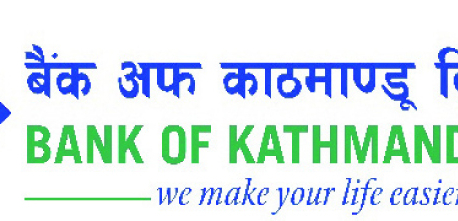
OR
Opinion
Central Bank Digital Currencies: Pioneering the Future of Money
Published On: November 3, 2023 09:15 AM NPT By: Dikshya Pokhrel


Dikshya Pokhrel
The author is a B.A.LL.B graduate from Kathmandu School of Law.news@myrepublica.com
More from Author
Over the course of history, the concept of money has undergone a noteworthy metamorphosis. It has evolved from the era of bartering cattle to the intricate realm of modern cryptographic currencies. Since the 1950s, the arrival of computers has ignited a continuous transformation in the economy, challenging traditional notions as money gradually transits from analog to digital.
As digital currencies have gained prominence, financial regulatory authorities have emerged with a new concept where central banks issue digital currency to provide an alternative to physical notes/coins known as Central Bank Digital Currency (CBDC). For emerging economies like Nepal such transition possesses opportunities and challenges simultaneously. Thus, it is critical to analyze how Nepal moves forward with such a transition.
What is Central Bank Digital Currency (CBDC)?
Digital currency is a digitized version of the cash. It is a representation of digital extension of state-issued cash that would be ubiquitous and used and accepted by all in the economy. It gives customers direct holding of bank accounts with the central bank. CBDC is directly pegged to the value of issuing the country’s fiat currency.
In the first instance people may confuse digital currency with mobile banking/fintech companies as both of them are operated through mobile applications but their similarities are limited to that. In the e-banking system it requires the bank account to be operated in a traditional/commercial bank. It requires an intermediate step to link the bank account to online payment systems. The transactions between the banks are relied on the bank's promissory bill. Likewise, it varies from crypto as it is centralized, reversible/mutable and identity verification/anonymity is required for transactions. CBDC will be backed by the government of the country and controlled by the financial authorities, unlike cryptocurrencies.
Current Standing of Crypto Market
The digital banking system has made a huge shift in the financial industry and development of e-commerce. With this, the increased use of digital currency such as bitcoins and other forms of crypto-currency has brought threat to the central banks. As of September 2023, the global crypto market cap is $1.4 trillion. Over 300 million people around the globe use/own crypto. Due to the increasing popularity of general people towards digital currency global regulators have turned their attention to understanding and addressing the risk surrounding them as widespread adoption of independent crypto currency could weaken their control over the financial system.
International Arena of CBDC
The interest in central bank digital currency is nearly universal. According to Atlantic Council, eleven countries have fully launched a central bank digital currency. India is the latest country to launch a central bank digital currency. At present, 130 countries, representing 98 percent of global GDP, are exploring CBDC. In 2020, only 35 countries were considering the CBDC. The shift can be attributed to Covid-19 which accelerated the transition of using digital payment methods. The significant interest of the central banks around the world has increased the viability of digital currency as the money of the future.
India is the latest country to launch a central bank digital currency. The first pilot phase of the project was launched in late December last year. Russia just began its digital ruble experiment with consumers from August 15. The central bank aims to fully launch the digital ruble by 2024 and make it available to its citizens by 2025. China, the world’s number two economic power, targets to make the digital yuan the go to payment means for its 1.4 billion population.
The viability test seems positive as the central banks across the world are taking aggressive steps to include digital currency within its domestic financial system. Those who have already launched pilot tests are expanding the scope of the test with time. However, two countries i.e. Senegal and Ecuador have canceled their CBDC projects due to respective challenges in operation.
National Arena on CBDC
In the Nepali context, global prominence of cryptocurrency received significant attention from Nepal Rastra Bank (NRB) over its fear of losing control over the financial system. As a result, the bank conducted a feasibility study exploring the adaptability of digital currency in the country concluding that CBDC remains feasible in Nepal. However, to address the legal and technical issues, the NRB needs to amend the Nepal Rastra Bank Act, 2002 in order to enable the issuance of digital versions of the Nepali currency.
The intention to conduct research on CBDC was included in the monetary policy of the fiscal year 2021/23, continuation of which is also present in the current fiscal policy for 2023/2024. A concept report on CBDC named, ‘Central Bank Digital Currency (CBDC): identifying appropriate policy goals and design for Nepal’ was released in August 2022 for public consultation. The NRB has also established a separate division within the Payment Systems Department with the aim of digital currency research and development.
Opportunities and Challenges of CBDC
Improving access to payments is one of the key elements for CBDC investigation. With decline in cash usage and growing reliance on private monies, the country faces potential hurdles during sudden disruptions in accessing payments. Digital transactions are more robust under critical situations like natural disasters where access to cash becomes more difficult. Following the global trend, the NRB plans to use this digital trend to help more people get access to financial services in a targeted and quicker way through CBDC.
However, as Nepal embarks on this journey towards CBDC, it encounters crucial questions that need thoughtful consideration. Some raise concerns about the authority of the central bank to issue digital currency, thereby sparking debates about the governance and operation of this fiat money. A developing country like Nepal can face several challenges. First off, adopting new technology comes at a significant cost, necessitating careful budgetary planning. Additionally, the threat of cyber security concerns remains ever-present, emphasizing the necessity of strong security measures in this digital age.
Conclusion
To sum up, The major economies of the world are exploring issuance of their own digital currency which delineates that in the near future we will be able to be direct customers of the NRB. Based on the current interest of financial authorities on CBDC, it is safe to say that it will be the future of money. CBDC will be a game-changer to reassert control of the central banks over a financial system which will mark the new era of money.
To stay abreast of the prevailing financial and monetary trends, the NRB needs to adapt to the new concept of fiat money. While challenges abound, there remains a huge possibility of the launch of CBDC in the domestic market, as Nepal’s largest trading partners have already launched e-currencies in their respective countries.
You May Like This

BoKL, Cashway Money Transfer in money transfer
KATHMANDU, June 9: Bank of Kathmandu Ltd (BoKL) and Cashway Money Transfer Pvt Ltd have signed a memorandum of understanding... Read More...

Families of those killed by cold don't have money for funerals
SIRAHA, Jan 14: Parmeshwor Paswan of Sitapur, Laxmipur Patari-6, lost his wife to cold after being unable to buy her warm... Read More...

Dev partners spending more money outside govt system: Report
KATHMANDU, April 17: Money disbursed by development agencies outside the government system increased significantly in fiscal year 2015/16, despite the government's... Read More...










Just In
- Heavy rainfall likely in Bagmati and Sudurpaschim provinces
- Bangladesh protest leaders taken from hospital by police
- Challenges Confronting the New Coalition
- NRB introduces cautiously flexible measures to address ongoing slowdown in various economic sectors
- Forced Covid-19 cremations: is it too late for redemption?
- NRB to provide collateral-free loans to foreign employment seekers
- NEB to publish Grade 12 results next week
- Body handover begins; Relatives remain dissatisfied with insurance, compensation amount







Leave A Comment